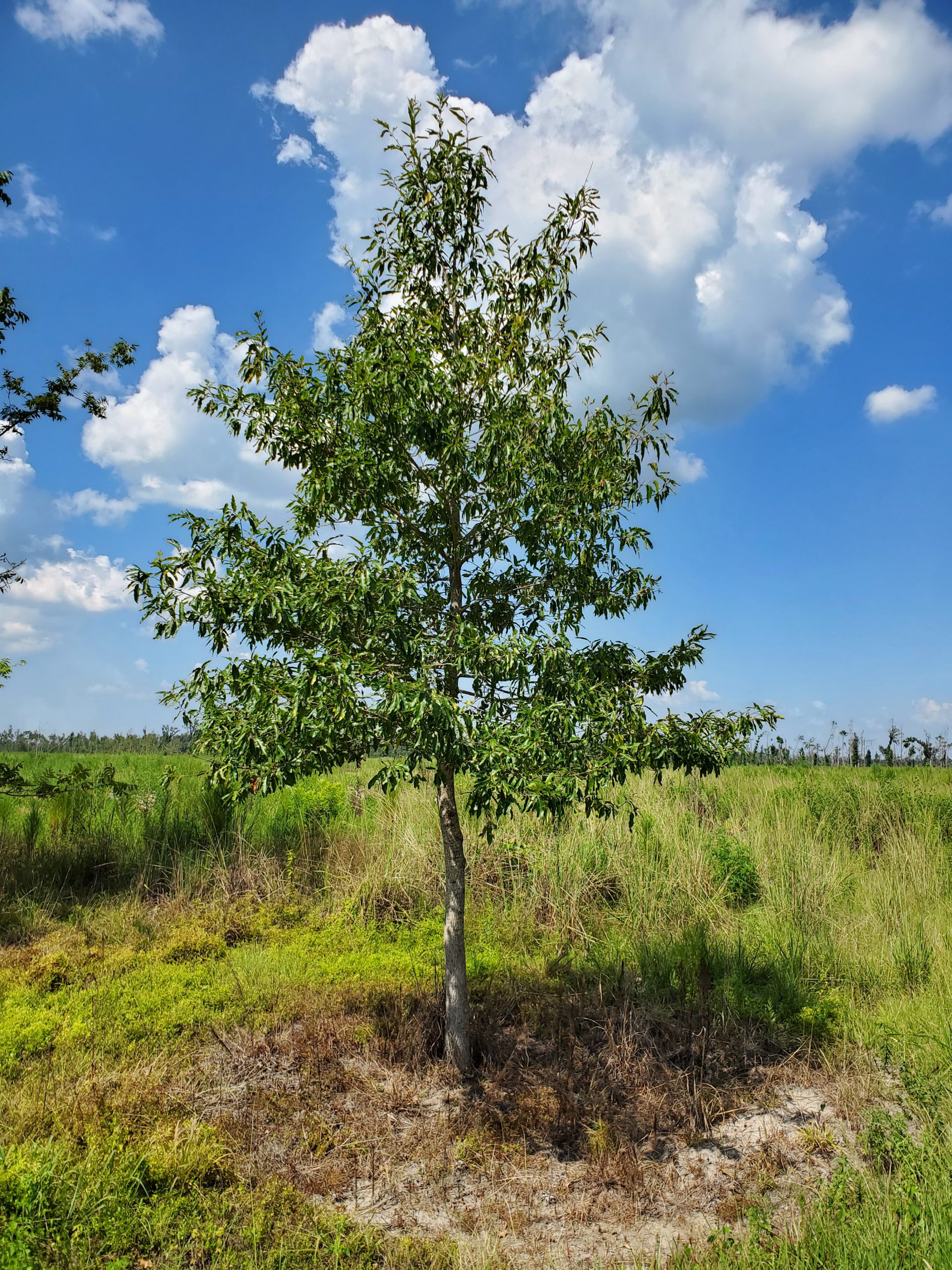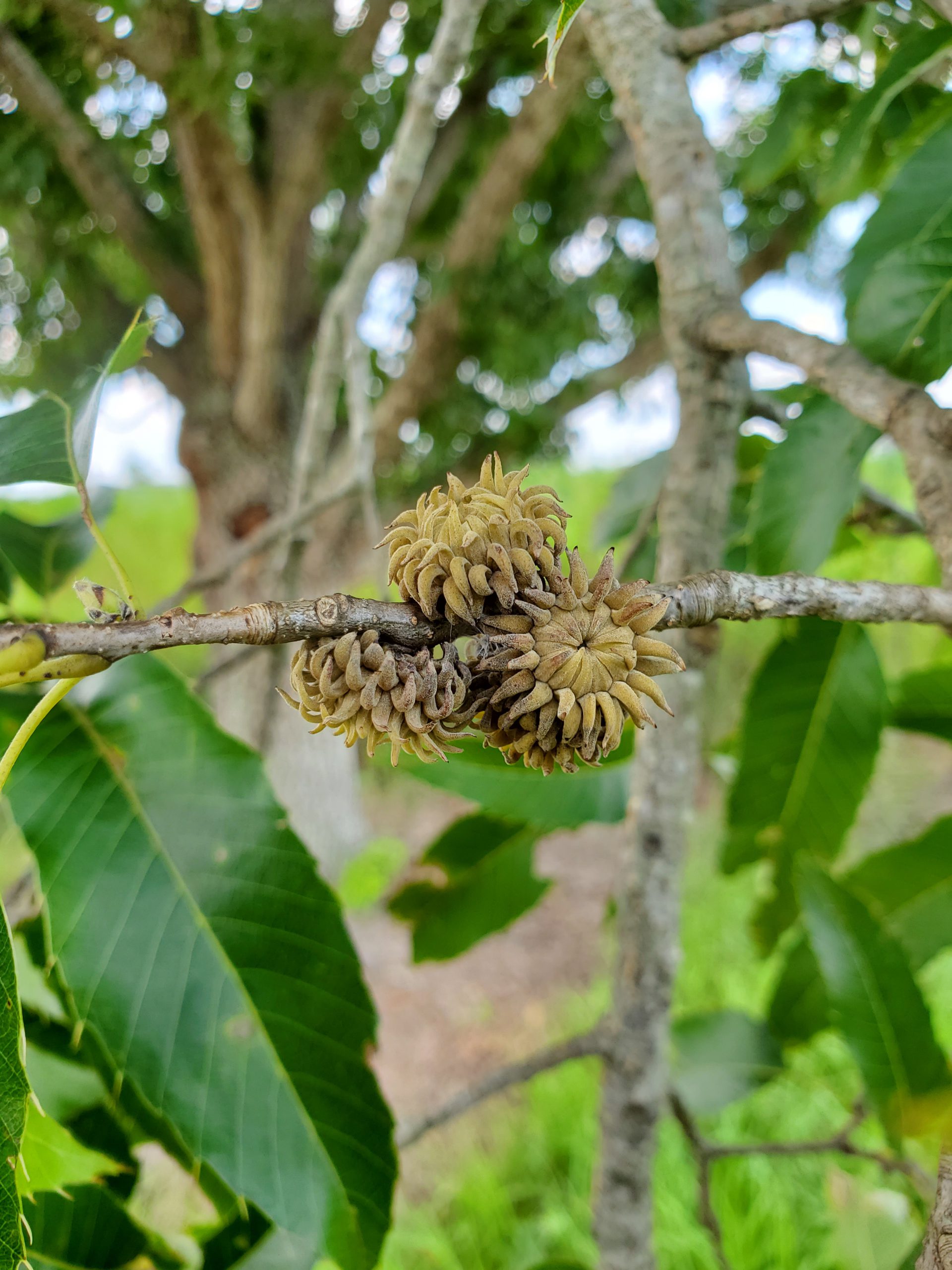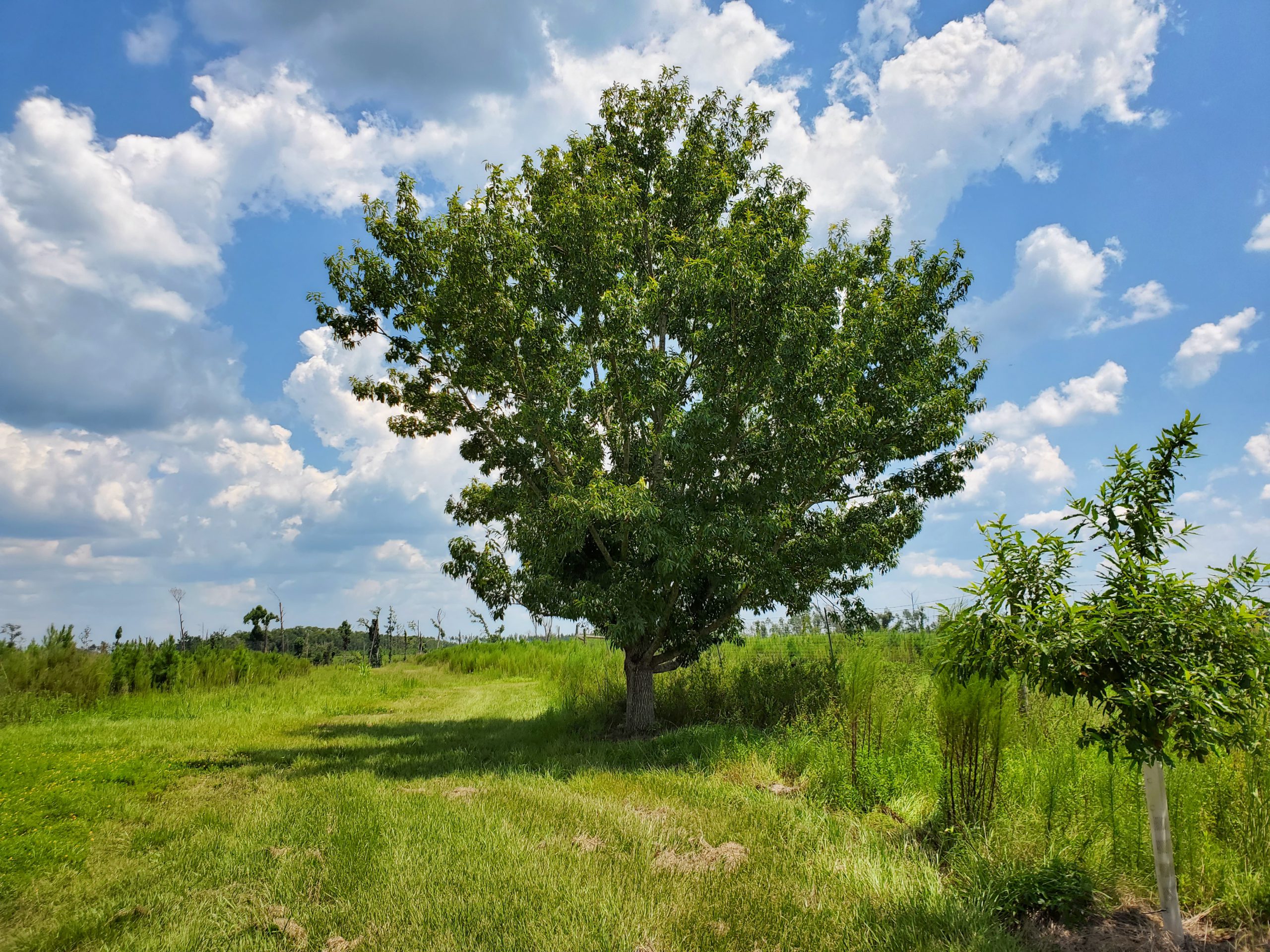Since entering the U.S. from Eastern Asia in the 1920s, and especially since its promotion as the ultimate wildlife tree in the last few decades, I doubt there has been a more widely planted tree by outdoor enthusiasts than Sawtooth Oak (Quercus acutissima). It is easy to see its appeal. Sawtooth Oak grows quickly, relative to other Oaks, rates of 3-4’ per year are not uncommon. It bears fruit at a very young age, as soon as five years from seed, and produces a heavy crop almost every year, unlike many native Oak species. Mature specimens are also mostly pest/disease free and are very attractive, reaching 40-60’ in height with sweeping, wide-spreading branches and deep, furrowed bark.
While it seems that I just described the ideal wildlife tree, and Sawtooth Oak is indeed a worthy inclusion to your property, it is not perfect. Even trees with the qualities Sawtooth Oak possesses come with drawbacks. All too often I have seen landowners and lease holders plant solely Sawtooths as part of their mast producing tree strategy. As in other areas of life, avoiding monocultures and adding a little diversity to your wildlife tree portfolio is beneficial. Keep the following lessons, that I’ve learned the hard way, in mind when you consider adding these wildlife attracting trees to your property.
- Acorns Drop Early – Sawtooth Oaks produce all their acorns very early in the season, beginning in September. Conversely, most of our native oaks drop their mast (a fancy word for acorns) during the winter months, November-January, better known as hunting season in the Panhandle. So, while Sawtooth Oak is an excellent wildlife attractant, and most any creature will readily gobble up their acorns, if you plant them as a tree to hunt around, you’re going to be disappointed. In most years, Sawtooth acorns are long gone before archery season starts in mid-October.
– - Invasive Potential – Sawtooth Oaks are non-native, very adapted species to the Southeastern U.S. climate, and produces literal tons of acorns each year. However, this species has the potential to become a nuisance invasive. I’ve seen this firsthand. I visited a site recently that had a couple of large Sawtooth Oaks planted in an area mostly excluded from wildlife pressure and was surprised by the number of small Sawtooth saplings popping up everywhere. It was eerily reminiscent of other invasive plants like Privet or Chinaberry. The above-mentioned characteristics, my anecdotal experience, and studies in other states suggest that we could be witnessing the blossoming of our next problem species. Plant with caution.
– - Less Nutritious Acorns – Sawtooth Oak acorns are heavily browsed, but it’s not necessarily because they’re extremely nutritious. A study from the 1960s by Sullivan & Young compared the nutritional quality of Sawtooth Oak acorns to 8 common native oak species and found Sawtooth lagged behind the natives by a significant margin in all macronutrients measured: protein, fat and carbohydrates. These findings suggests that, while Sawtooth Oak is an excellent wildlife attractor, if your goal is growing higher quality game animals and providing valuable nutrients to get them through the winter, Sawtooth Oak should be a minor component of your strategy, not the endgame.
– - Longevity – The jury is still out on longevity. However, anecdotal evidence from around the Southeast suggests that Sawtooth may not be as long-lived as some of our native oaks. This could be due to several factors. First, as a rule, extremely fast-growing trees tend to be shorter lived, due to generally weaker branching structure, less dense wood, and other factors. Think of the tortoise and the hare analogy. The quickest do not always win the race. Second, Sawtooth Oak did not hold up particularly well during Hurricane Michael and other strong storms. Their growth habit (heavy, wide spreading branches low to the ground) is not conducive to major wind resistance. This is to be expected as Sawtooth Oak is native to areas that do not experience tropical wind events, and likely evolved accordingly.
–
I am by no means suggesting that you shouldn’t add Sawtooth Oak to your property in the hopes of encouraging wildlife. There are few trees available that do a better job of that. I am suggesting that Sawtooth Oak should be a small part of your larger overall planting strategy, and you should keep in mind the potential drawbacks to this species. Plant mostly native oaks, allow Sawtooth Oak to be a supplement to them, not the main event, and I think you’ll be pleased with the results. Putting all your acorns in one basket is rarely a good strategy.
For more information on Sawtooth Oak, other wildlife forage and attractant strategies, or any other natural resource, agronomic or horticultural topic, contact your local UF/IFAS County Extension Office.
–
Literature Cited:
Watson, D. G., & Gilman, E. F. (1993, November). Quercus acutissima: Sawtooth Oak. UF/IFAS Extension EDIS.
Sullivan, E. G. and W. C. Young. 1961. An exotic oak, Quercus acutissima for wildlife food planting. Proceedings Annual Conference Southeast. Assoc. Game and Fish Comm.15:136-141.
- Adding Soft Mast Trees to Your Wildlife Food Plots - April 12, 2024
- Poor Food Plot Performance – 3 Simple Solutions to Common Problems - January 5, 2024
- Private Applicator/Core Pesticide Applicator Exam Prep & CEUs – December 13 - December 8, 2023



